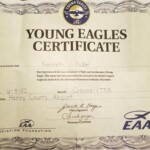Iceland – Winter has Come
18 March 2017 | Updated on February 05, 2024
February 28th 2017
Winter in our higher latitudes can be harsh. Mentally harsh. After three months of depressive rain, submissing mist and a unwelcome mildness blocking the skies with tepid water, a three-day long depression reduces the island to a non-stop curfew.
Biblical plagues rough up. Armageddon descends onto Earth with pouring globs of charring ire and the skin-chaffing breath of Hell at over 80 knots in gusts.
Then, out of the dark, the Arctic winter rolls in, bringing under its white cape clear, endless skies freezing Iceland’s crunchy crust to a stand-still. Taking advantage of this climatic cease-fire, I accompany a friend of mine on a prehistorical ( some would say “retro” ^^) Cessna 150 along the West coast, sight-sighing Iceland’s riches under a white veil of fluff.
Departing Reykjavik, calm and smoky in the chill, we cruise along the coastline, grazing the sharp side of Mount Esja, the capital’s natural volcanic setting of tuff and brittle basalts. Turning right into Hvalfjörður, a 30km-long fjord east of the town of Akranes, we see turquoise above and sapphire below.
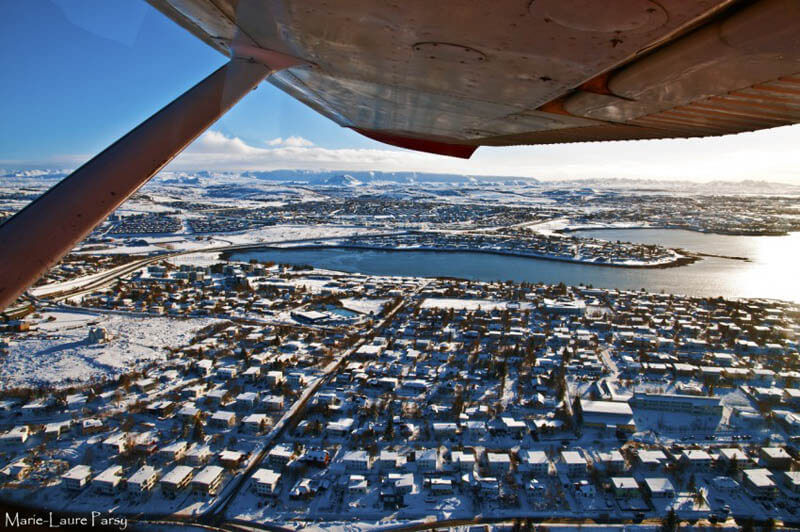



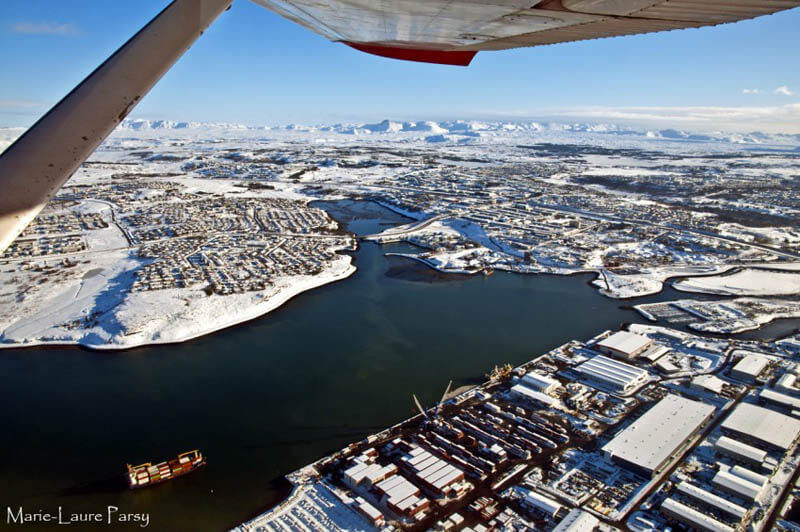



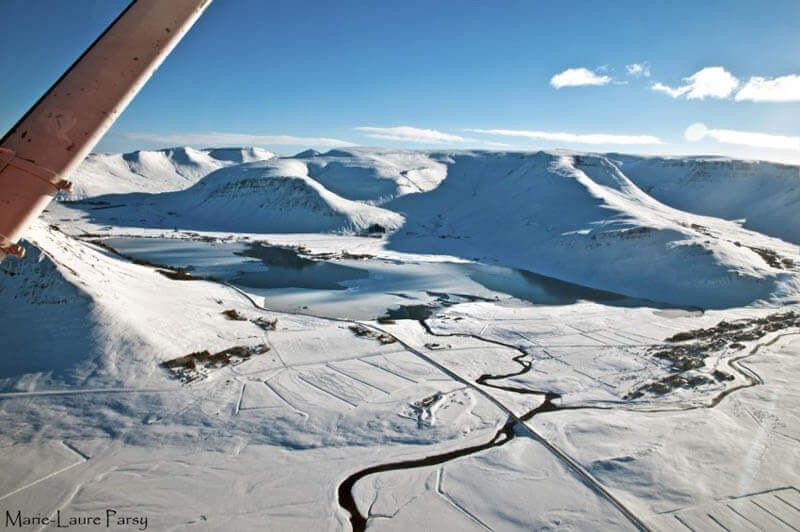

Hidden in its deepest troughs is Glymur, Iceland’s second highest waterfall with a dizzying height of 198m. Behind Hvalfell mountain, the Hvalvatn lake streams into a deep canyon, birthing the waterfall from the dewing of snow.
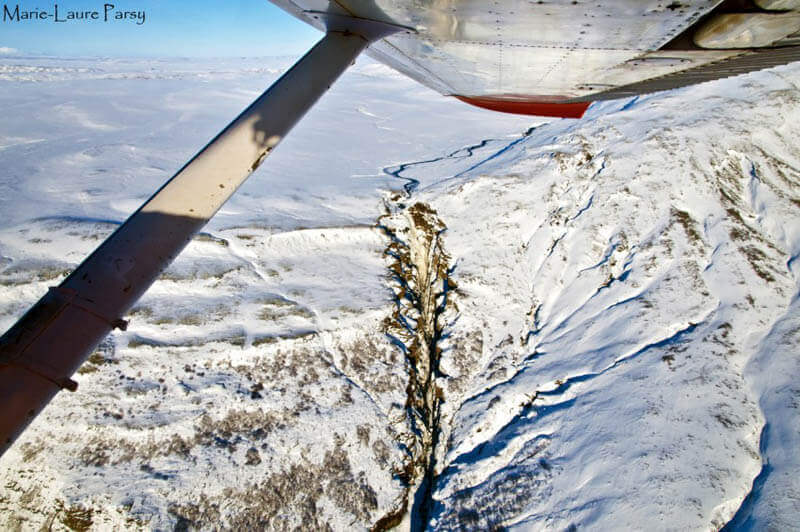

Heading North-West, we then cross the high grounds of Botnheidi, taking the plunge towards the next fjord over Skorradalsvatn, a narrow 15km-long lake surrounded by high mountains and cradled by foresty shores.
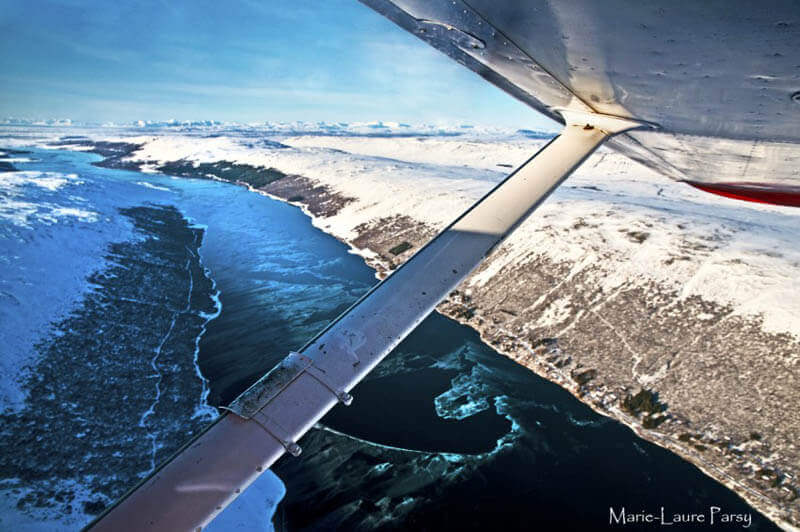

Out of Borgarfjörður, we cruise over snow-covered marshes towards Snæfellsnes, spotting below the 60m-high Eldborg crater.




Brushing tips with Prifjoll and Satuhnukur, we set to explore the line of fjords crowing the North end of the peninsula. Grundarfjördur hides Kirkjufell, an iconic cone-shaped mountain jotting from the sea, a natural twin to Jörmungandr’s fangs.
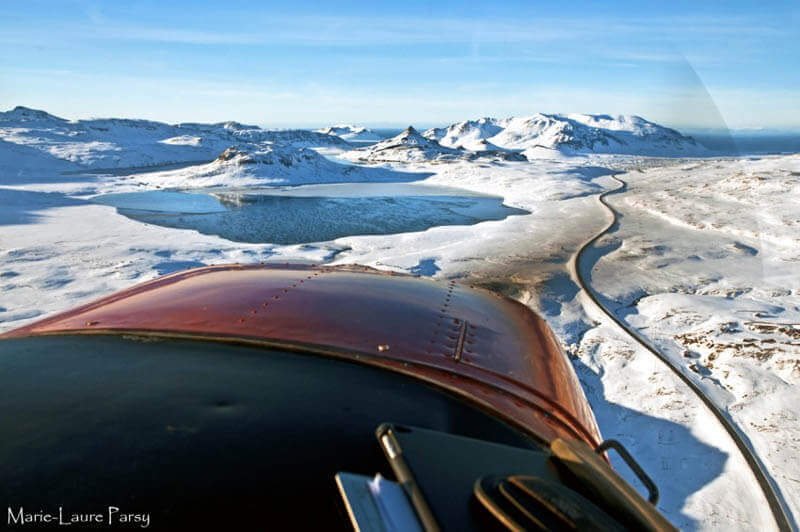



Over Rif airport and around Snæfellsjökull, a 700,000-year-old glacier-topped stratovolcano, famous for being Jules Verne’s entry point to the subterranean world of “Journey to the Centre of the Earth”, we then catch the breeze home.
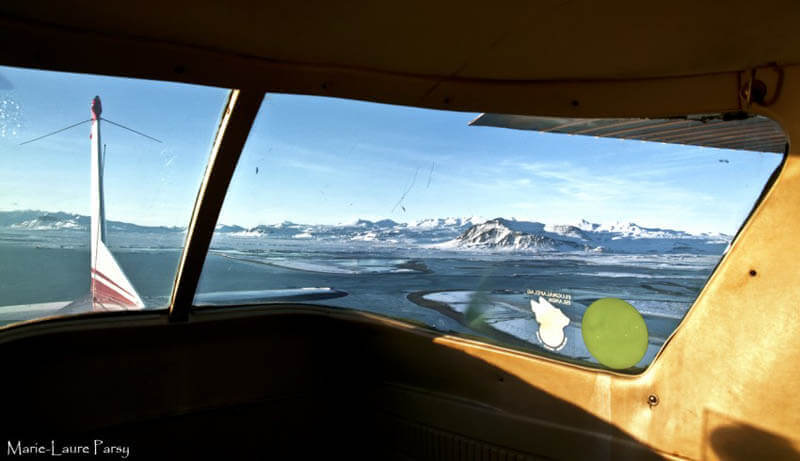

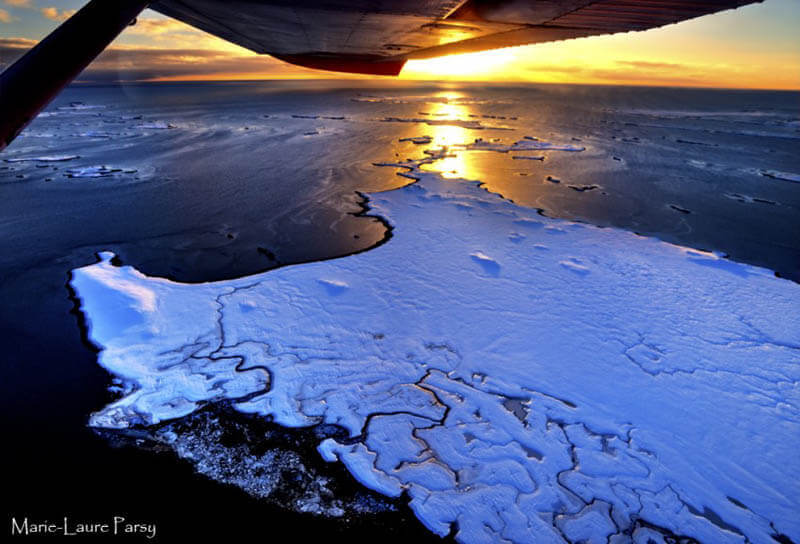



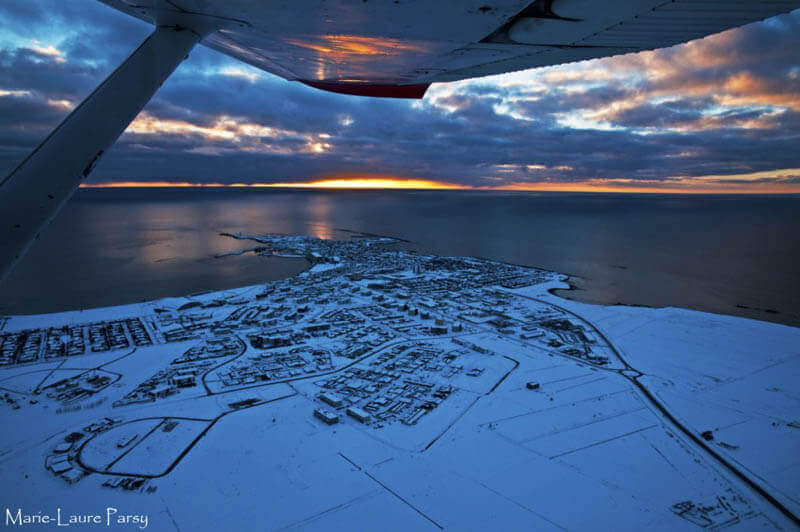



As the sun falls from its high seat, our bird peacefully glides its way back to Reykjavik airport. We leave our Winter wonderland to the auspices of stars and the dancing caress of polar lights, chasing away the cold’s biting numbness with dazzling tales of flight.
Thanks Guðlaugur Grétar Þorsteinsson for the flight!
Blog: Introspections Nomades – 66 degrees high
Instagram: @introspections.nomades
























